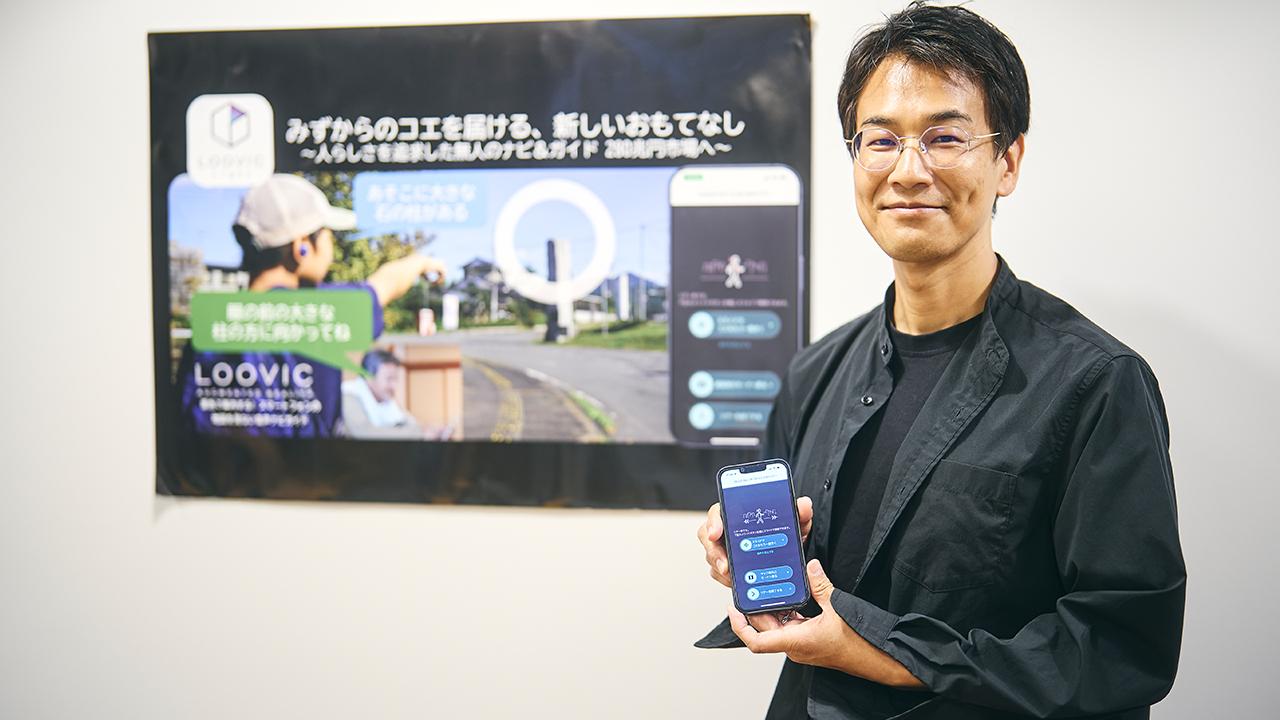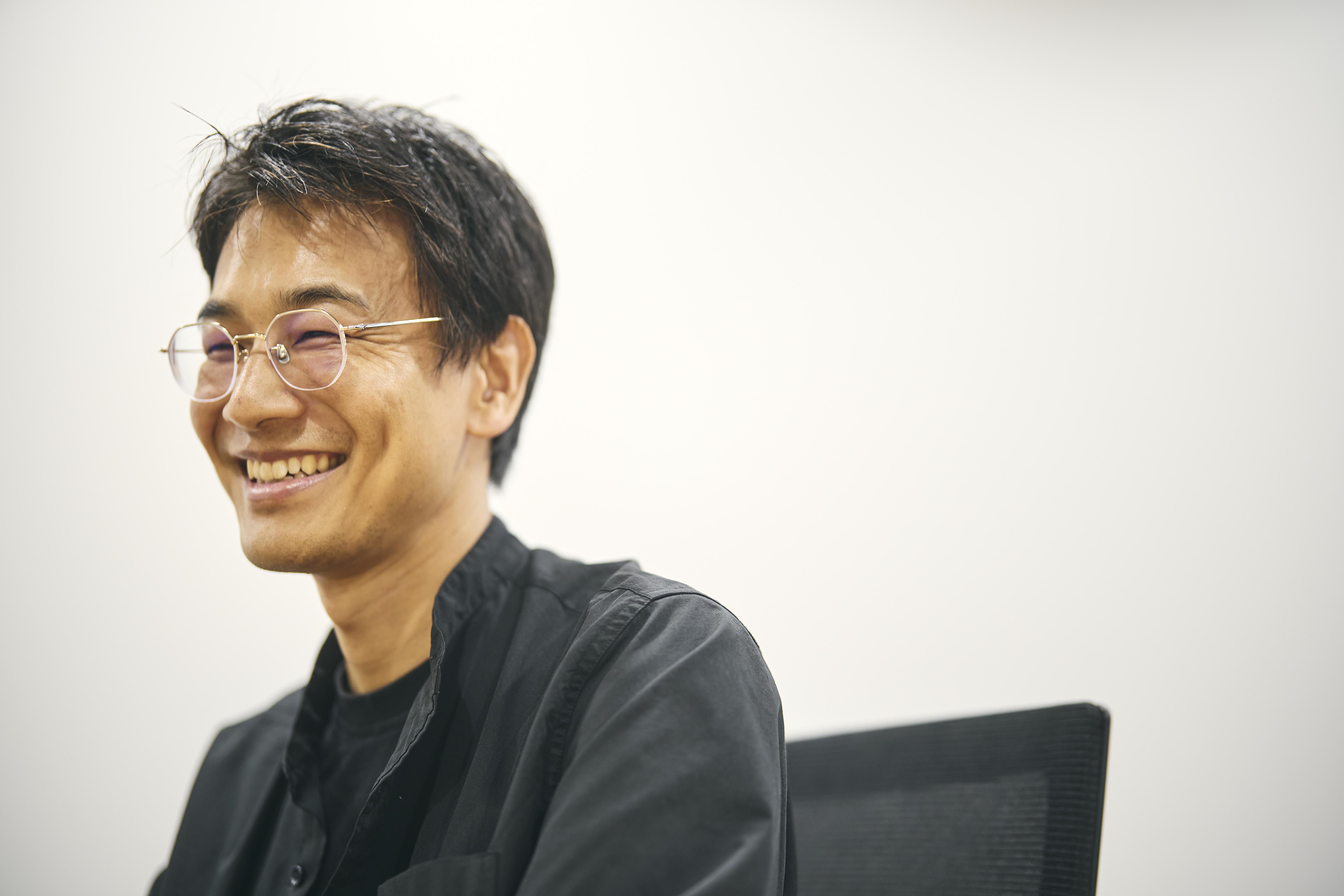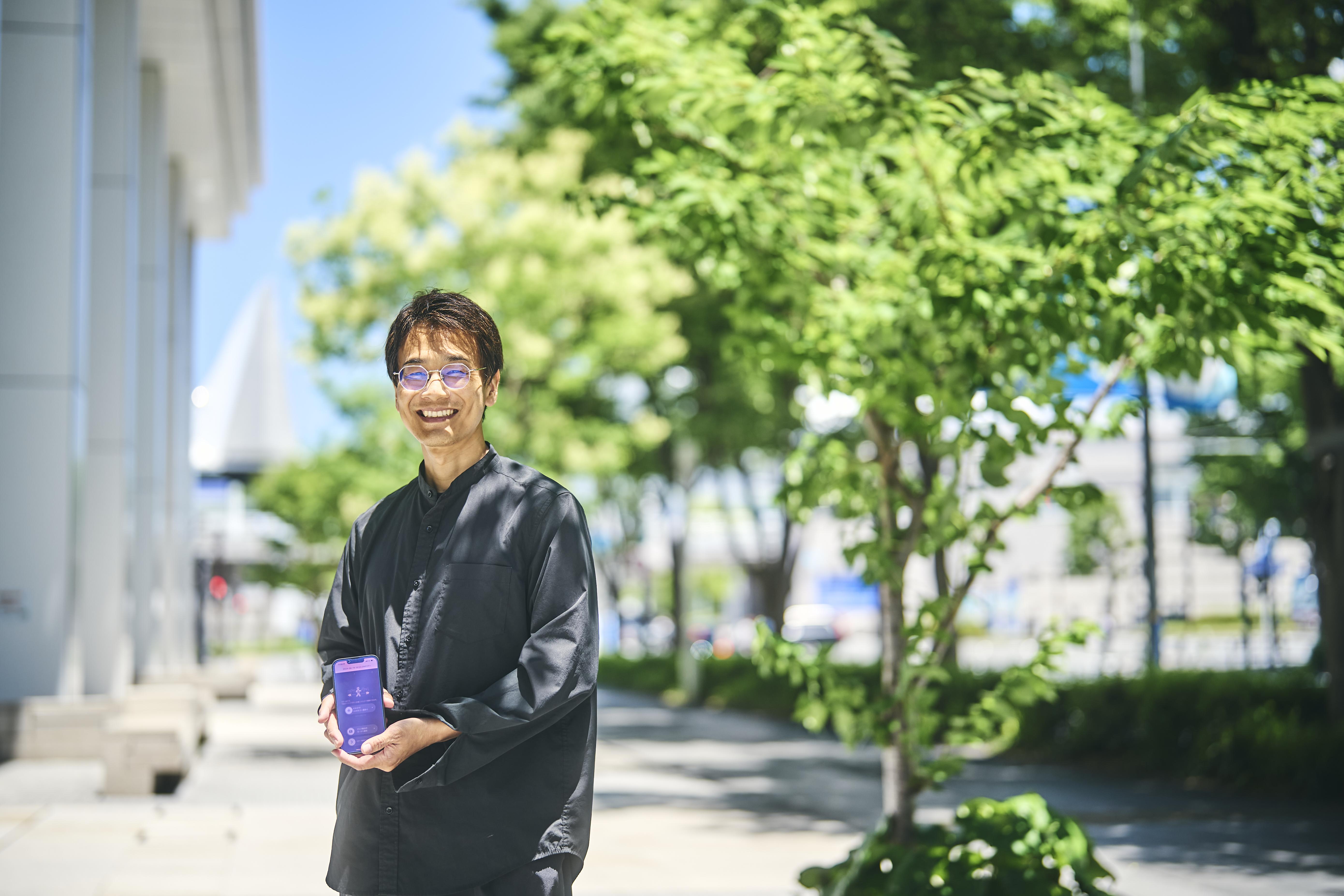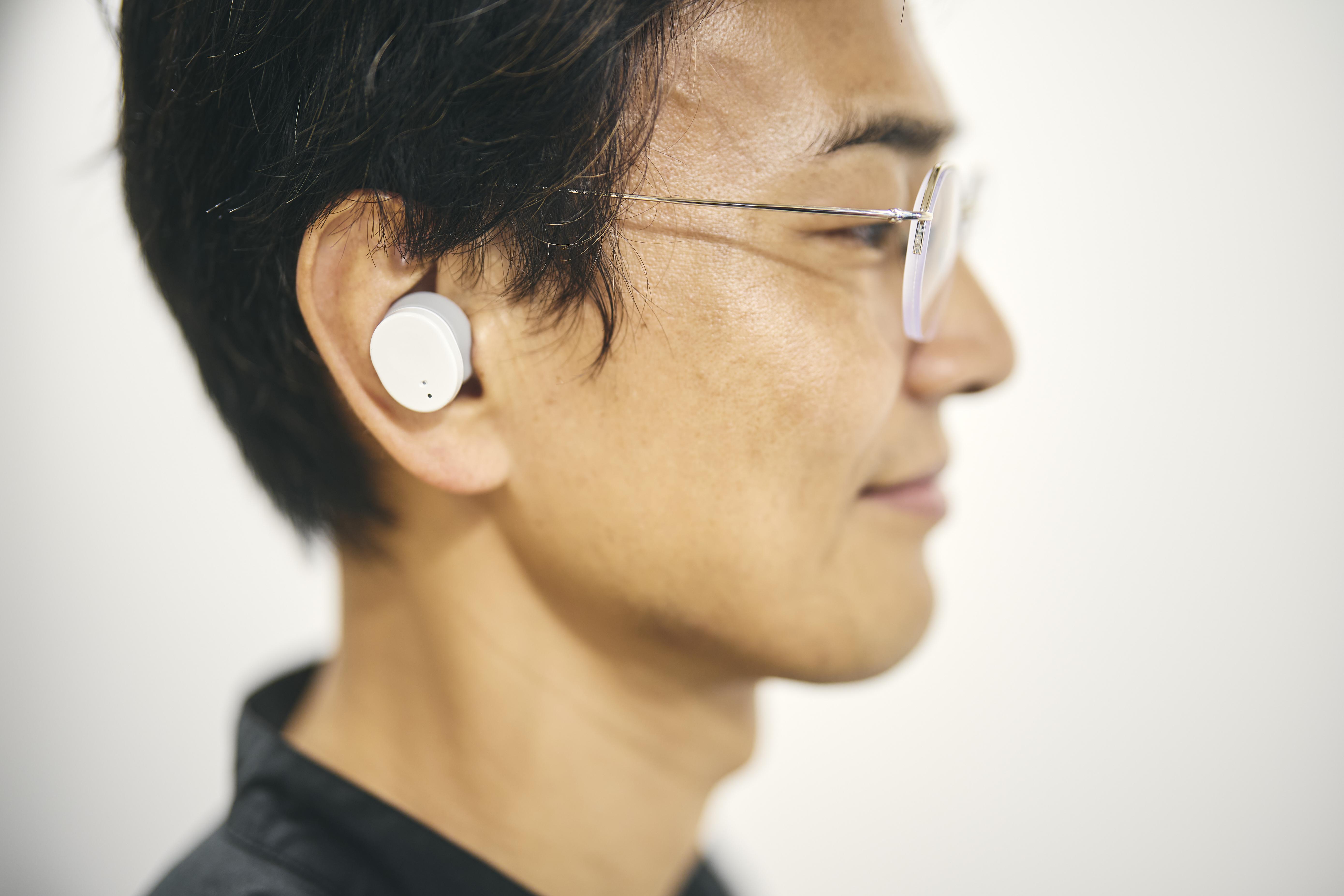
Partners in Future Mobility profiles innovative startups that participated in the Japan Mobility Show 2023. Our third article showcases LOOVIC, a service that supports mobility with personally recorded route guidance.

Held for the first time last fall, the Japan Mobility Show renamed and redefined the Tokyo Motor Show as a platform where various mobility-related companies from the auto industry—and beyond—come together to create the country’s future.
This series profiles innovative startups that participated in the Japan Mobility Show 2023. What does mobility mean to those like-minded partners also working to create the future, and what visions lie behind their endeavors? We delve into the stories that emerge from the Japan Mobility Show and the possibilities they offer for the future of mobility.
A mobility support service that feels like having someone by your side
LOOVIC is a service that allows people to support the mobility of loved ones by recording and sharing route information in their own voice. To reach their destination, users can rely on a familiar voice coming through their earphones rather than looking at a screen, like they were enjoying a stroll together.
“While existing map services are very convenient, they mean we spend more time staring at our smartphones and less time being aware of our surroundings,” says Toru Yamanaka, LOOVIC’s co-founder & CEO. “LOOVIC can inform you about key points along the route as well as sights you might otherwise overlook, helping you reach the destination with confidence while enjoying the journey.”
The service was initially created to support the independence of those who have difficulty with spatial cognition, meaning they struggle to perceive how objects are located within a space or to remember a given scene. Today, however, LOOVIC shows promise in a wider range of applications, including being used alongside safety aids in various types of mobility.

In 2022, the Toyota Mobility Foundation selected LOOVIC in its “Mobility for ALL” category and went on to participate in trials at the Okayama International Circuit and other locations. Always on the lookout for mobility-related information, Yamanaka says he learned about the Japan Mobility Show 2023 early via news and other media.
“I felt that the Motor Show being reborn as a Mobility Show, encompassing all mobility, was highly relevant for us. And indeed, so many people visited our booth that we ran out of leaflets despite bringing a lot. I had never experienced anything like that before.”
Exhibiting at the show brought many positive responses, even leading to a collaborative relationship with Suzuki to work on senior mobility events. Yamanaka says he also received more requests for interviews.
“The interviewer for car magazine ahead OVER 50 had rally co-driver experience and remarked that by putting itself in the shoes of the person traveling, LOOVIC adopts the same perspective as a co-driver. That really struck me. Until that point, I had only considered pedestrians, but by taking part in the show, I realized that LOOVIC fits well with cars and various other vehicles, from bicycles to personal mobility.”
The trouble with giving away too much
Yamanaka’s motivation for developing LOOVIC came from his own child, who has a spatial cognition impairment. However, he did not begin developing the service immediately; instead, the option of starting a business arose naturally along his career path.
It came from his personal experience, beginning with the monozukuri genba at Iris Ohyama and followed by stints at NTT PC Communications and Amazon Web Services, where he gained expertise in telecommunications and cloud computing before finally tackling new business development at an IoT-related startup.

“While working at the startup, I began to think about what I, too, could do to make a difference in society. This motivated me to look closely at myself, and I realized that my family situation had given me a unique experience.”
His son’s condition makes it difficult to remember information about his surroundings, which means he often struggles to grasp his location and recognize landmarks and directions. From junior high, he had to commute by train and for the first year needed someone to accompany him each day because he could not remember the way to school.
“That experience led me to wonder whether I could create something that would help people with similar conditions to be independent and move through society without trouble,” says Yamanaka.
Initially, he looked into AI assistant technologies such as Alexa and geolocation beacons that work by detecting Bluetooth signals. By combining the two, Yamanaka figured he could find a way to support spatial cognition.
“My first attempt was a ring-type device, which was popular at the time. But I abandoned that idea due to battery problems. From there, we tried various things, including a tactile device with technology that made the wearer feel as though they were being led by the arm.”
Yamanaka then developed a new device worn on the shoulders or neck instead of the arm, which appeared in its final form at the aforementioned Okayama International Circuit trials. Alongside voice support, a tactile device worn on the shoulders vibrates to indicate when the user should turn. “Voice alone is not enough because some people have difficulty intuitively understanding right and left. Coordinating vocal guidance with vibration direction means we can help more people,” Yamanaka explains.
“The trials confirmed that this approach makes understanding left and right very easy. However, it proved dangerous with children in particular, as they tend to follow those left/right directions without thinking and would go out onto the road even if a car was coming.”
If users are given too many easy answers, they risk becoming overly reliant on the device and stop thinking for themselves. Yamanaka was conscious of that from the start, but he still felt that his device had ended up doing too much handholding.
Tough decisions lead to optimal solutions
Nevertheless, Yamanaka continued to develop the tactile device until it was essentially complete, believing that including vibrations would allow him to help more people.
“When I saw the various booths while exhibiting at CES 2023, I realized that Asian firms would create similar products within a month of us releasing our device. As a startup with no money, we had no chance competing against companies that could instantly imitate something we had spent two or three years developing. So, we decided to focus solely on voice despite the advantages of vibration guidance.”
Setting the idea of a device aside was hard, but Yamanaka felt he could return to it at some point by teaming up with a quality manufacturer. In its place came LOOVIC, a service that required only a smartphone app and a pair of earphones. It was surprisingly effective.
“People with spatial cognitive impairments tend to have superior hearing, which develops to compensate for misalignments or slight weaknesses in vision. In that case, audio is ideal without providing excessive support. What’s more, the ability to use standard earphones caters to people with impairments who don’t want to stand out and makes the service easier to use for anyone lacking confidence in their sense of direction. We felt that this system could be used more broadly.”
In addition, Foster earphones equipped with 9-axis sensors (3‑axis accelerometer, 3‑axis gyroscope, 3‑axis compass) allow users to hear guidance from the direction they need to turn. Yamanaka aims to continue making further refinements in this way by incorporating devices from other companies.

“Looking back to when my son was small, I remember the family helping him get around by giving him hints about landmarks and directions. He also had an extremely anxious personality and would get worried if we weren’t constantly by his side.It wasn’t a special idea—I simply used technology to replicate the practice outings we did to help him become independent. I went back to the starting point.”
Spatial cognition impairments comprise a range of different characteristics. Although these can be remedied with repeated practice outings to memorize surrounding information, effectiveness varies greatly between individuals. The way hints are provided must also be tailored to each person. LOOVIC focuses on providing information from people who understand the user’s personality, creating a sense of trust and security by matching places to familiar, real-life voices previously heard in those locations. In a sign of Yamanaka’s commitment to this concept, voice navigation and guidance are not openly shared; instead, functionality is limited to sharing audio recorded for loved ones among family and friends.
“Firstly, we want to raise awareness of our work. With that in mind, recently, we have started conducting trials in collaboration with zoos, botanical gardens, and other leisure facilities. We’re also promoting the service for tourist sites.” LOOVIC is set to continue growing.
Lastly, Yamanaka answered the question we pose to everyone in this series: what is mobility?
“Mobility is the verb ‘move’ as a noun—that is, mobility expresses voluntary movement in all its forms.”

